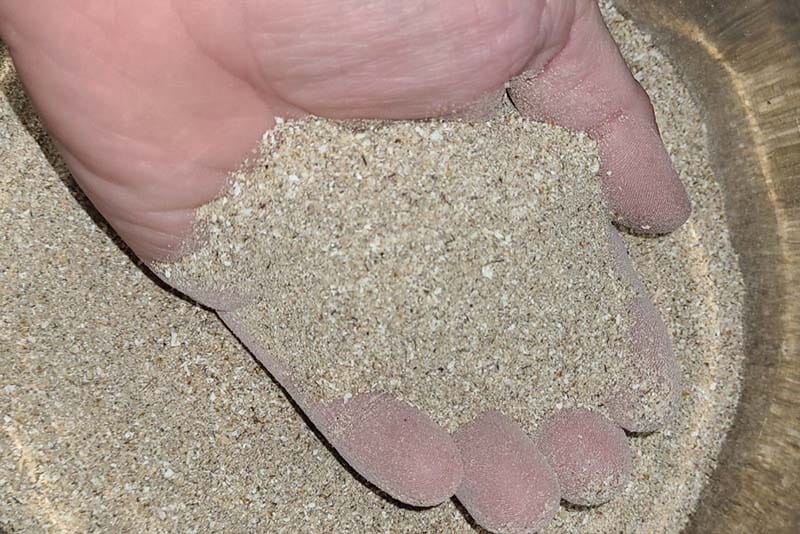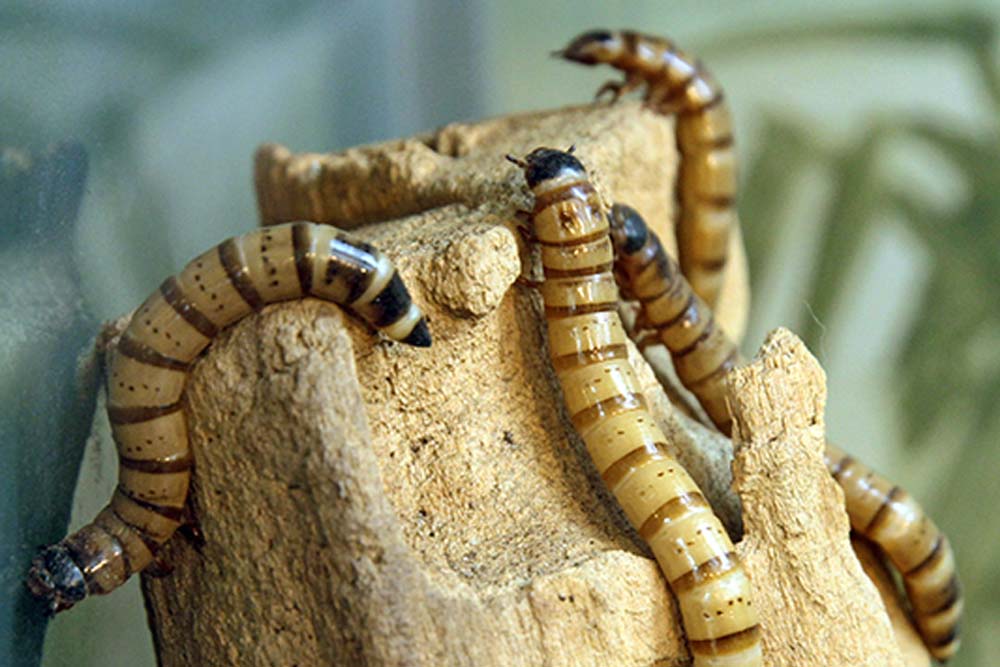
Critters & Bugs
We Do Bugs Best
Who We Are
Your 1-stop shop for the best quality feeder insects for your animals. We now produce frass, a 100% organic and natural fertiliser for your plants and soil.

DRIED MEALWORM PROMOTION!
BUY 1 GET 1 FREE on all DRIED MEALWORM quantities.
Offer valid while stock lasts.
Shop Now
Frass (Fertiliser)
A natural bio-organic pesticide and bio-organic fertilizer all in one product.
R90.00 - R300.00
Superworms
Superworms are extra large mealworms. A versatile food most commonly used to feed wild birds, large fish, mammals, reptiles, turtles and terrapins.
R60.00 - R330.00
Mealworms
Plump nutrient-rich mealworms provide a natural insect food for lizards and birds in your aviary and garden.
R70.00 - R480.00
Our Youtube Channel

Worms Collection
Please view our ordering process
and shipping details

Shipping
Shipping: The courier guy

Policies and Procedures
Refer to out policies and procedures
page for more info
Frequently Asked Questions
Mealworms
Upon receivng your mealworms you need to consider a few things.
First, you want to make sure that the meal worms remain in good quality by ensuring they are stored in a container such as a cat litter tray.
Next, they will need a constant source of moisture or water which they can get from slices of raw carrots or potatoes.
You can add to their food source with oats or bran.
That way you know that you are giving your pets and animals the best quality food they can get.
Frass
Frass is made from the excrement and exoskeletons of bugs. Chock-full of beneficial microorganisms and chitin — a naturally occurring polysaccharide found in many organisms — which helps plants to defend themselves against pests and pathogens.
Features:
• 100% organic and natural
• The only immediately plant-available source of chitin
• Similar to guano or castings — it’s a perfect plant food!
• Will NOT attract bugs to your garden
• Works great in hydroponics too!
Grower’s Tip:
Recent studies suggest that chitin signals a defense response in plants causing them to strengthen cell walls, produce larger stalks and leaves, and excrete metabolites that ward off pests and disease causing fungi.
Insect Frass contains high concentrations of beneficial microbial life and chitin. The presence of chitin signals plants to protect themselves from an insect attack, leading to increased resistance to pests and disease.
- Frass contains nitrogen, phosphorous and potassium which plants require to grow healthy foliage, strong roots, stems, flowers and fruits. Studies have found frass to outperform other organic fertilisers, like compost, likely due to its high mineralisation rate resulting in better supply and availability of nutrients to plants (Beesigamukama et al. 2020). Frass has also been found to increase drought resistance and salt tolerance in various plant species (Beesigamukama et al. 2020).
- Frass also encourages healthy ecosystems, with studies showing the addition of frass to soil can encourage more pollinators, larger plant growth, plus greater production of flowers and seeds (Schmitt and Vries 2020)
Chitin
Chitin, on average, is the main component of insect exoskeletons, and the cell wall of fungi. Insect larvae are rich in chitin. As the larvae develop and grow, they repeatedly shed their exoskeleton which is then left behind in the frass (Quillam et al. 2020). Insect frass is the only plant digestible form of chitin. It has been demonstrated that the frass has the ability to induce beneficial modifications in soil microbiome, and to promote healthy ecological systems through suppressing pest pressures (Schmitt and Vries 2020). Chitin elicits a range of defense responses in host plants in response to microbial infections (Hadrami et al. 2010).
- Another study found soil amended with chitin to increase total actinomycetes population (beneficial soil microbes that breakdown resistant forms of organic matter that plants cannot degrade), and produce a potato harvest with significantly less tuber scab than the untreated soil (Hadrami et al. 2010). Chitin naturally creates antimicrobial peptides when under environmental stress by making mineral nutrients inaccessible to pathogens and halting the discharge of pathogenic mycotoxins (Choi and Hassanzadeh 2019). This process forms defense against pathogens from harming the plant, while successively stimulating the growth and activity of beneficial microbes in the soil (Sharp 2013).
- Chitin’s biochemical compounds are similar to that of the cellulose found in plant cell walls (Sharp 2013). Akin to cellulose, chitin supports the mechanical and physical barriers that offer structural strength and combined with other compounds helps facilitate stronger plant tissue (Sharp 2013).
References:
Choi, S. and Hassanzadeh, N., 2019. BSFL Frass: A Novel Biofertilizer for Improving Plant Health While Minimizing Environmental Impact.
El Hadrami, A., Adam, L.R., El Hadrami, I. and Daayf, F., 2010. Chitosan in plant protection. Marine drugs, 8(4), pp.968-987.
Sharp, R.G., 2013. A review of the applications of chitin and its derivatives in agriculture to modify plant-microbial interactions and improve crop yields. Agronomy, 3(4), pp.757-793.
Mealworm frass is a natural byproduct of the cultivation of mealworms (Tenebrio molitor), which are commonly used as feed for pets and livestock. However, recent research has shown that this material can also have numerous benefits in agriculture. The frass can be used as a soil or compost amendment, as a fertilizer, and is an all natural pest repellent that can strengthen the plants defences against pests.
The frass is high in organic matter, nutrients and beneficial bacteria. When added into a soil or compost, it improves the soil structure by increasing soil aeration, soil fertility, water retention, and overall soil health. This leads to improved root development and better overall plant growth. Furthermore, the organic matter in mealworm frass can also help to reduce soil erosion.
It is an excellent fertilizer for a variety of crops. It is rich in essential nutrients, including nitrogen, phosphorus, and potassium, with an NPK value of 3:2:3, all of which are vital for healthy plant growth. Additionally it contains a high level of chitin, a type of polymer that is essential for the growth and development of roots, leaves, and stems. Chitin also has the ability to stimulate the growth of beneficial microorganisms in soil, which in turn improve soil fertility and plant growth.
In addition to being a fertilizer and soil amendment, the frass can also be used as a natural pest repellent. Chitin has been shown to have insecticidal properties, making it a natural way to control pests such as aphids, whiteflies, and thrips. Research has shown that the addition of frass has lead to a decrease in pest damage and an increase in plant growth and yields.
In conclusion, as an all natural, sustainable and renewable resource, mealworm frass is accessible to farmers of all sizes and has the potential to significantly improve crop yields and quality.
Reference List:
R, G. Sharp. (November 2013). Moulton College. A Review of the Applications of Chitin and Its Derivatives in Agriculture to Modify Plant-Microbial Interactions and Improve Crop Yields. Agronomy: 3(4), 757-793
D, Houben, et al, (March 2020). Potential use of mealworm frass as a fertilizer: Impact on crop growth and soil properties. Scientific Reports: 10(1):4659.
J, Poveda. (January 2021). Insect frass in the development of sustainable agriculture. Agronomy for Sustainable Development: 41 (1).
J, I, Blakstad. (May 2021). The utilization of frass from the yellow mealworm (Tenebrio molitor) as a plant fertilizer and immune stimulant. Masters Thesis, NTNU.
Frass Mixing instructions
Our mealworm frass is a non-dissolving product that is mixed with water, at a ratio of 3Kg of frass to 1000 Liters of water.
- For home use, using a 20L bucket is ideal - 20g or 2 1/2 table spoons per bucket
- For commercial use 3Kg per 1000L
Mixing: Home use
- Add the frass to the bucket and fill the bucket with water.
- For the best results, let the frass and water mixture stand in the bucket for 48Hrs, stirring the mixture once or twice a day.
- Pour the product directly on to the plants or vegetables including the frass sludge, either from the bucket or a watering can.
- Once the mixture is used up, remix the next batch so as to water every two days with frass water and water normally on the off day.
Mixing: Commercial use
- Mixing 3Kg per 1000L of water in a plastic container is ideal, or 5Kg per 5000L Container.
- Circulating the water once or twice daily by means of a swimming pool pump is ideal and the mixture then left to stand for 2 days for maximum results.
- The frass is not dissolvable, therefore, if pumped through a dripper system the frass will block the system up immediately. The frass water will have to be filtered into another tank to remove the powder out of the water prior to using a dripper system.
- Using a hose pipe would be ideal if you don’t have a filtering process.
Using frass water every second day gives optimal plant growth and protection against soil based pests and airborne pests acting as a bio-organic pesticide.
All our trials have been carried out in compost and soil mix at a 50/50 ratio as a medium for the root system. Our trials will be available as videos on YouTube
Note:
After numerous sample testing, the above ratios were found to give the best results and adding more product than advised did not make any significant difference to plant growth and development.
The frass water mixture can be used after 2 Hrs of the product being in water and will work, however, as stated previously, our testing showed that best results were obtained after 48Hrs of the frass standing in water.
Letting the mixture stand for longer periods of time also showed no further significant improvements or results.
Our Bugs & Critters

Frass (Fertiliser)
A natural bio-organic pesticide and bio-organic fertilizer all in one product.

Superworms
Superworms are extra large mealworms. A versatile food most commonly used to feed wild birds, large fish, mammals, reptiles, turtles and terrapins.

Mealworms
Plump nutrient-rich mealworms provide a natural insect food for lizards and birds in your aviary and garden.



